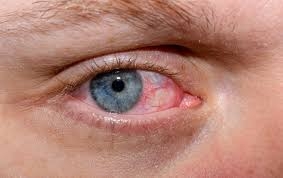Dry Eye Disease (DED) is a prevalent ocular condition that significantly impacts patients' quality of life. Traditional diagnostic methods often fall short in addressing the multifactorial nature of DED, leading to delayed diagnoses and suboptimal treatment outcomes. A recent article by Dr. Marc Labetoulle, published in Ophthalmology Times Europe, introduces a patient-centric, five-step diagnostic approach that promises to revolutionize DED management by emphasizing efficiency, personalization, and holistic care.
Understanding Dry Eye Disease: A Multifaceted Challenge
DED is characterized by a loss of homeostasis of the tear film, leading to ocular discomfort, visual disturbances, and potential damage to the ocular surface. Its etiology is multifactorial, involving tear film instability, hyperosmolarity, inflammation, and neurosensory abnormalities. Patients often report symptoms like burning, grittiness, and photophobia, which can be exacerbated by environmental factors and systemic conditions.
The complexity of DED necessitates a diagnostic approach that goes beyond surface-level assessments, considering both subjective symptoms and objective signs to tailor effective treatment strategies.
The Five-Step Patient-Centric Diagnostic Approach
1. Assess Signs and Symptoms
The initial step involves a thorough evaluation of the patient's reported symptoms and observable signs. Patients across diverse backgrounds often describe similar sensations, such as dryness, irritation, and visual fatigue. Clinicians should actively listen to these accounts, recognizing patterns indicative of DED. It's crucial to consider comorbidities that may amplify symptom severity, ensuring a comprehensive understanding of the patient's condition.
2. Evaluate the Global Burden of DED
To gauge the disease's impact on daily life, tools like the Pentascore questionnaire are employed. This instrument assesses the intensity and frequency of ocular discomfort, the effect on daily activities (e.g., reading, screen time), and the efficacy and tolerability of ongoing treatments. A study across five European countries revealed that nearly 40% of patients feel the need to wear sunglasses regardless of the weather, 31% avoid air conditioning, and 25% experience difficulty using video screens due to DED. Such insights underscore the importance of addressing the broader implications of DED on patients' lives.
3. Determine the Type of DED
Identifying whether DED is evaporative, aqueous-deficient, or a combination is vital for targeted treatment. While 80% to 90% of DED cases are at least partially evaporative, a short tear break-up time (TBUT) is not exclusive to DED. Other conditions, such as toxicity from eye drops, past corneal infections, eyelid malposition, and neuropathic corneal pain syndrome, can also result in a short TBUT. Differentiating these conditions ensures accurate diagnosis and appropriate management.
4. Conduct a Targeted Examination
A detailed assessment of the ocular surface, including the conjunctiva, cornea, and eyelids, is essential. Dye staining helps evaluate tear quality, and the Schirmer test measures tear production. Notably, 95% of patients do not require elaborate ancillary testing with sophisticated machines. This minimalist approach streamlines the diagnostic process, making it efficient and accessible for all clinicians.
5. Personalize Treatment Based on Findings
Once the diagnosis is confirmed, treatment plans should be tailored to the patient's specific condition. Identifying and removing causal agents, such as non-adapted medications or environmental factors, is crucial. For patients with associated systemic diseases like Sjögren syndrome, collaboration with internal medicine specialists is recommended. Topical treatments may include tear substitutes with polymers adapted to the DED subtype and severity, osmoprotectants, antioxidants, lipids, or other active components targeting key factors. Inflammatory forms of DED may require additional anti-inflammatory therapies.
Emphasizing Efficiency and Accessibility
A standout feature of Dr. Labetoulle's approach is its efficiency. The entire diagnostic process can be completed in 5 to 10 minutes, making it practical for routine clinical settings. By focusing on both subjective symptoms and objective signs, clinicians can develop personalized treatment plans that significantly enhance the patient's quality of life. This model underscores the importance of semiology in understanding DED and highlights that diagnosing and treating dry eye can be accomplished swiftly, making it accessible to all eye care professionals.
Conclusion: Advancing Dry Eye Disease Management
The patient-centric, five-step diagnostic approach introduced by Dr. Marc Labetoulle represents a significant advancement in the management of Dry Eye Disease. By integrating comprehensive assessments, personalized treatment strategies, and efficient diagnostic procedures, this model addresses the multifaceted nature of DED. Clinicians adopting this approach can expect improved patient outcomes, enhanced quality of life for sufferers, and a streamlined process that fits seamlessly into various clinical settings.





